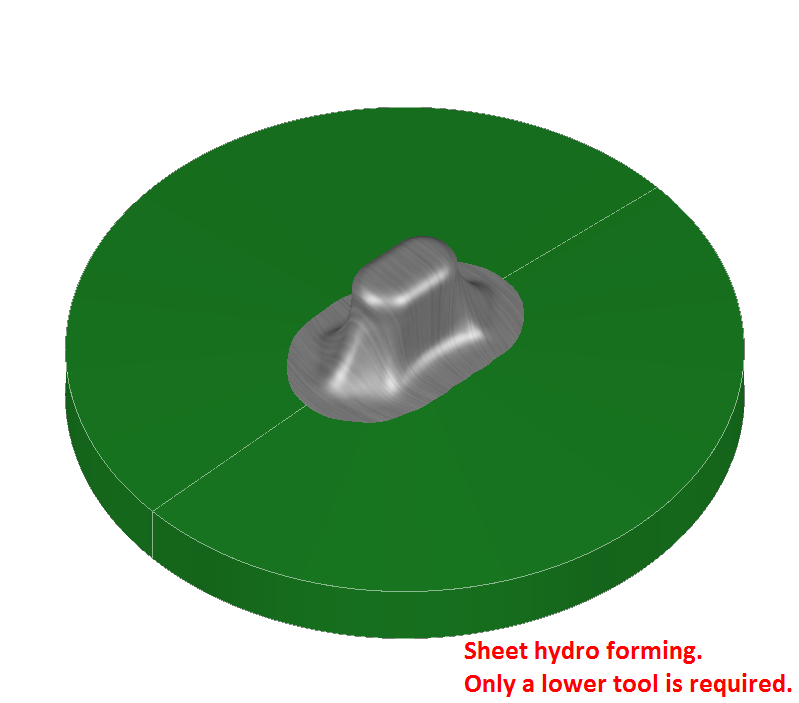How to Identify If Sheet Metal Hydroforming Is Right For Your Project
Contents
Under the right circumstances, sheet metal hydroforming can be a cost-effective, durable manufacturing process; however, it depends on each project and the available equipment. Benefits include reduced cost and setup time as well as minimized thin-out, which is ideal for complex shapes and elimination of draw marks. If there is a disadvantage, it would only be that a specialized hydroforming press is required, and production speeds are much slower than traditional stamping methods.
Sheet Metal Hydroforming
In this article, we are specifically referring to the sheet metal hydroforming process, as opposed to tube hydroforming which we have covered previously here.

Triform specialize in sheet metal hydroforming equipment. StampingSimulation.com specialize in the simulation of any sheet metal forming, including sheet hydroforming.
Here’s our quick checklist for sheet metal hydroforming suitability:
- Low production volume. A few parts to perhaps 5,000 at most.
- Complex 3D shape, which would usually be deep drawn.
- Difficult material where tooling radii may otherwise prevent forming or deep drawing.
- Part can be drawn to final shape, then full 3D laser trim (or similar).
- Lead time to produce parts is very short.
- Tooling budget does not allow high volume production tooling.
- Suites medium and smaller parts best.
Hydroforming Process
The sheet metal hydroforming process involves more simplified tooling, compared to traditional sheet metal stamping. In the sheet hydroforming process, it is only necessary to create one side of the tooling, usually the lower. The upper tooling is provided by the hydroforming machine, usually a flexible rubber membrane in which large amounts of hydro pressure are contained.

Sheet hydroforming is best suited to low production runs OR prototypes where cycle time is not critical but reducing tooling cost is. For this reason, the lower tools may be “soft” and therefore can be machined quickly and easily, meaning hydroforming projects can go from design to simulation to production in very short lead times.
Typically, a sheet metal hydro form part would be a complex draw from an oversized blank, then a full 3D laser trim would cut the part from the hydro drawn shell. A binder OR lower pressure pad and even draw beads are usually used to control the draw process. The success (or failure) of a sheet metal hydro part often depends on knowing the amount of hydro pressure that is required, and this is when a simulation is required to understand all required parameters for a successful hydro outcome.

Avure specializes in sheet metal hydroforming equipment. StampingSimulation.com specialize in the simulation of any sheet metal forming, including sheet hydroforming.
Because there is no upper tooling, many surface marks are eliminated. There are no points of hard contact with a solid upper tooling, and therefore surface finish is superior when compared to traditional sheet metal stamping. Furthermore, the absence of a hard upper tool means less thinning in tight areas as metal stretching is more evenly distributed, and strains are less concentrated.
Sheet metal hydroforming simulations will determine and show exactly where thinning occurs and by how much. The simulation will also determine pressure requirements and therefore suitable hydroforming equipment required to create the hydroformed part.
Contact us today to get a free project quote!
